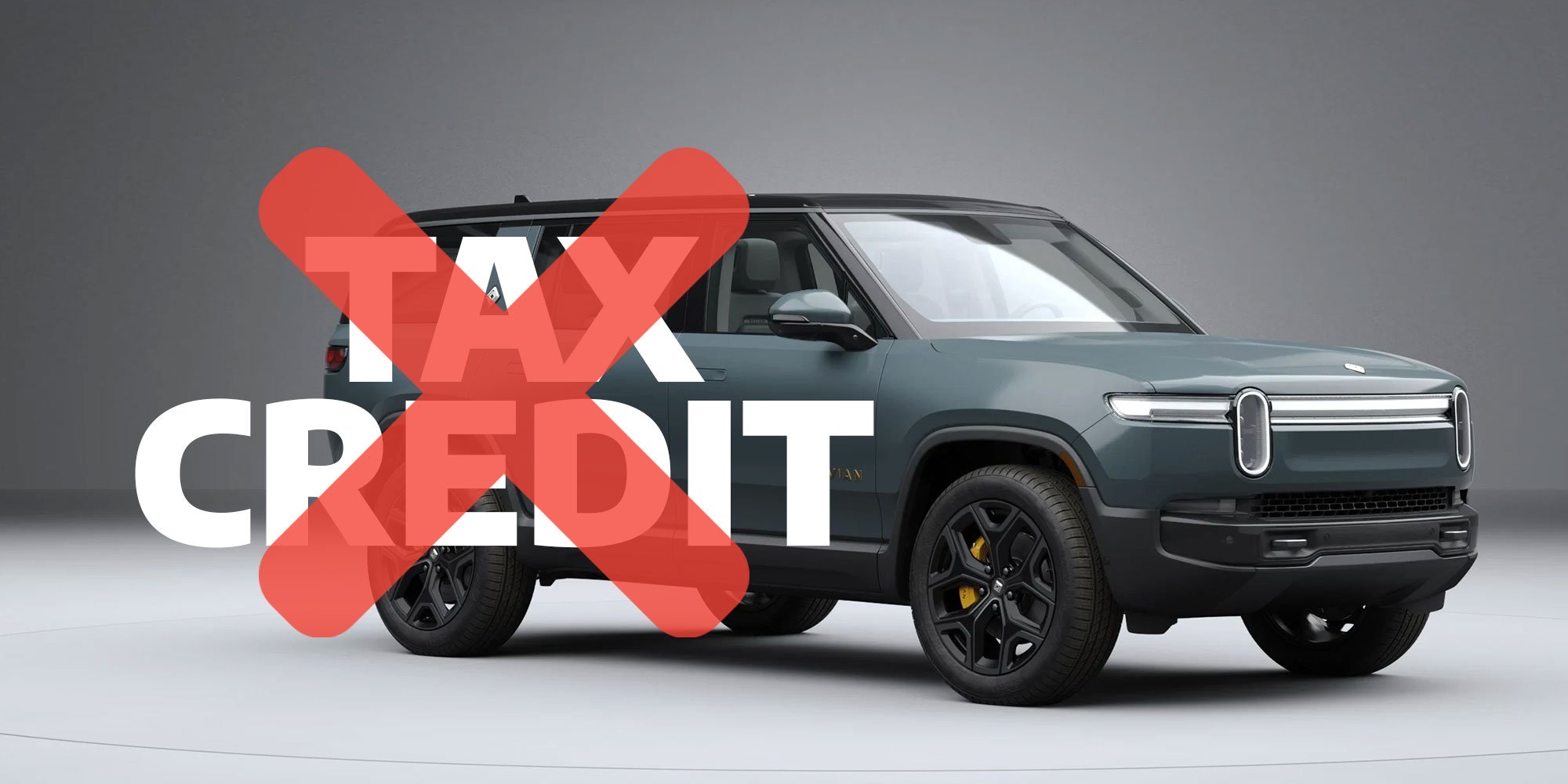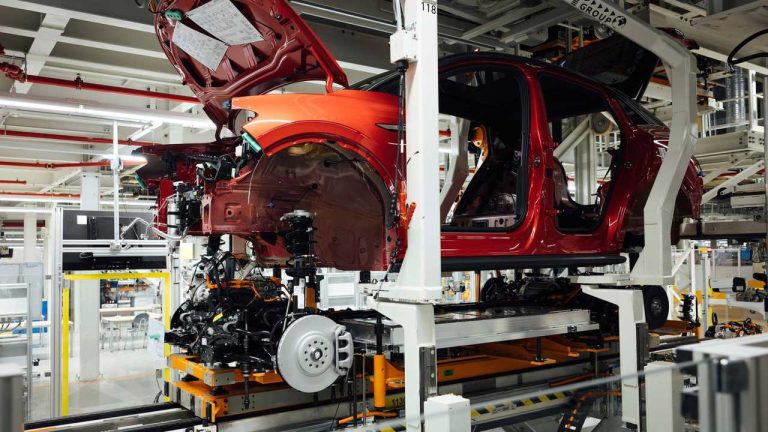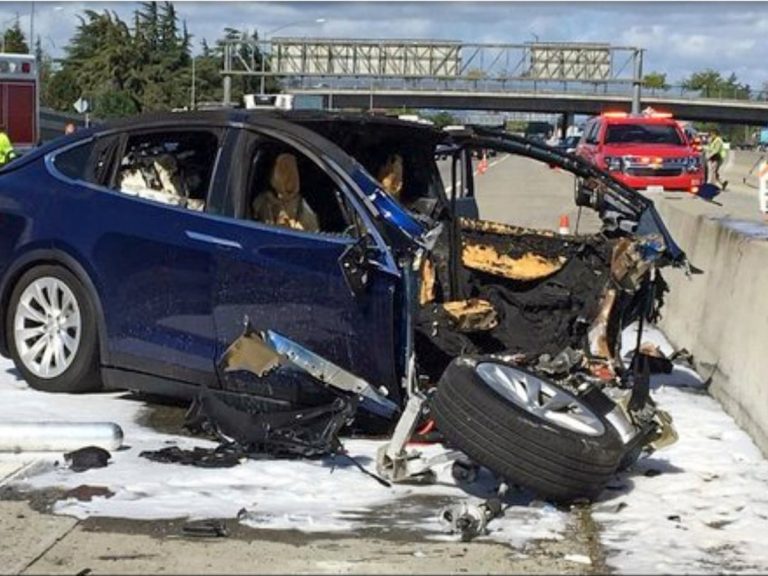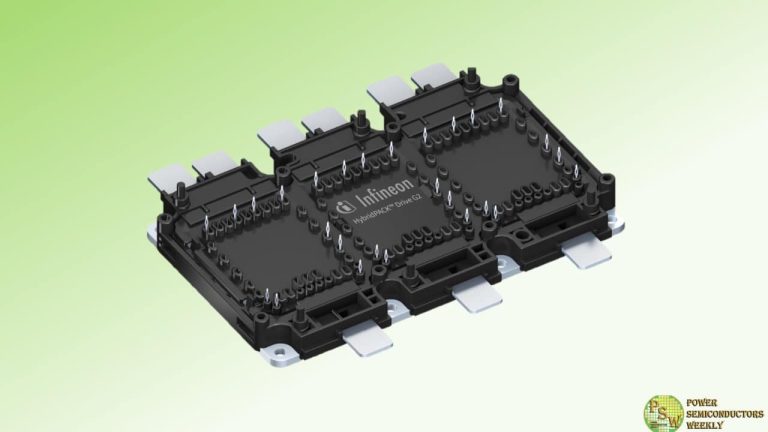Rivians Cfo Signals a Dynamic Shift in Ev Manufacturing as Tax Credits Vanish

Rivian’s Bold Strategy in an Uncertain EV Market
In recent months, the electric vehicle landscape has undergone some notable twists and turns. As federal tax credits evaporate, many traditional automakers are pausing their electrification plans, rethinking production numbers, and delaying EV launches. However, for dedicated EV manufacturers like Rivian, these tricky parts of the market don’t present an excuse to slow down—instead, they serve as a launching pad for innovation and strategic transformation.
At a recent automotive conference in Detroit, Rivian’s CFO, Claire McDonough, revealed that the company’s push into affordability will soon bear fruit. With the upcoming launch of its second-generation midsize SUV, known as the R2, Rivian aims to cater to a broader customer base that has been largely left out of the electric vehicle revolution by traditional price points.
Adapting to Policy Shifts in the Automotive Industry
The abrupt end of tax credits—which once reduced consumer cost by up to $7,500—has left many manufacturers with the nerve-wracking challenge of recalibrating their business models. The elimination of these credits, a result of President Donald Trump’s tax and budget bill effective from September 30, poses a complicated puzzle for companies that heavily relied on government incentives to drive demand.
For established brands, the loss of these benefits has forced a pause to their EV rollout plans. Yet pure-play EV makers like Rivian cannot afford to take a step back. Instead, they are forced to get creative and figure a path to make their vehicles more accessible without the cushion of government subsidies.
Challenges in a Policy-Driven Shift
- Disappearing federal incentives require a fresh look at vehicle pricing strategies.
- Legacy automakers are scaling back on production and investment, leaving the market in a state that is both full of problems and unpredictable.
- Manufacturers must manage cost-cutting measures while pursuing innovation and greater market penetration.
This evolving scenario has forced companies like Rivian to work through the fine points of production costs, pricing strategies, and long-term brand recognition. Their approach to designing a more accessible yet feature-rich electric vehicle demonstrates the kind of innovative thinking that sets them apart in an increasingly competitive field.
Rivian’s Strategic Transition: The R2 SUV
Rivian’s upcoming R2 model symbolizes a critical shift towards mass market appeal. The new midsize SUV is targeted at younger buyers and consumers who do not require the larger, more expensive three-row alternatives that currently dominate the EV price ladder. Priced to start at around $45,000, the R2 represents a calculated move to open the electric vehicle market to a much larger segment of the population.
While Rivian’s current passengers vehicles start above $70,000, the introduction of the R2 could signal the company’s intent to realign its pricing strategy in order to build a broader consumer base in an environment where affordability is becoming key.
Economic and Production Considerations
Behind this bold move lies a mixture of rapid scaling and significant cost-cutting measures. Rivian has been rethinking its go-to-market functions—streamlining operations and reducing overheads to balance its production costs with the expected lower price point of the R2. In recent months, the company made headlines by cutting approximately 4.5% of its workforce, an off-putting but necessary measure in a market loaded with economic uncertainties.
This approach is also reflected in its manufacturing processes. By cutting material costs in half compared to its earlier R1 models and harnessing design efficiencies, Rivian is positioning itself to achieve better economies of scale. A larger production volume not only promises lower per-unit costs but also paves the way for further long-term savings.
Table: Production and Cost-Cutting Measures
| Strategy | Action Taken | Expected Benefit |
|---|---|---|
| Workforce Optimization | 4.5% reduction in staff | Streamlined operations and reduced overheads |
| Cost Reduction in Materials | Material costs halved compared to R1 | Increased profit margins per unit |
| Manufacturing Efficiency | Scale-based cost savings | Lower overall production costs |
These tactical adjustments are not merely about slashing costs—they are about positioning Rivian as a forward-thinking electric vehicle company that is resilient under pressure. In a market where automakers are learning to steer through tumultuous economic conditions, Rivian’s approach appears to be a proactive attempt to take the wheel and redefine the rules of the game.
Investment in Production Capacity and Infrastructure
To support the new R2 SUV, Rivian has significantly expanded its manufacturing footprint. The company’s facility in Normal, Illinois, has grown by 1.1 million square feet—a move designed to cater to a projected capacity of up to 215,000 vehicles annually. This expansion is essential if Rivian intends to meet the growing demand for affordable electric vehicles, especially when legacy automakers have slowed down their production lines.
Furthermore, the company has plans to break ground on a new plant in Georgia next year. This facility will not only support the production of the R2 but also lay the foundation for future models such as the anticipated R3. These strategic moves underline the company’s commitment to long-term growth and established its place as a serious competitor in the EV market.
Implications for the Broader U.S. Automotive Landscape
While Rivian is a key player in this transformative period, the ripple effects of its strategy are likely to influence the broader U.S. automotive scene. With many mainstream automakers experiencing a slowdown in their electrification efforts, Rivian’s aggressive expansion and cost-reduction strategies may encourage a new generation of EV manufacturers to rethink their priorities. If the R2’s launch succeeds in shattering the notion that electric vehicles must be expensive, it could lead to a seismic shift in consumer expectations and market dynamics.
Targeting a Broader Audience: Bridging the Gap Between Luxury and Mass Market
One of the most intriguing aspects of Rivian’s upcoming product strategy lies in its attempt to bridge the gap between luxury EVs and mass-market affordability. The company is setting its sights on a demographic that includes both younger consumers and older individuals who are in search of a practical vehicle without luxury overkill. This focus on the middle ground is an off-putting challenge that demands a delicate balance: making a vehicle appealing enough to be considered a mass-market option, yet innovative and high-quality enough to stand out in the competitive EV arena.
Rivian’s decision to cut costs drastically while still pushing for higher quality and innovative features highlights an essential trend in automotive manufacturing—being able to offer top-tier technology without the intimidating price tags traditionally associated with advanced electric vehicles.
Key Features of the R2 SUV
- Affordable Price Range: Starting at approximately $45,000, aiming to attract customers who were previously priced out.
- Enhanced Production Efficiency: Streamlined processes reduce overheads and ensure price competitiveness.
- Modern Aesthetics and Functionality: A design that appeals to both tech-savvy millennials and practical older buyers.
- Autonomous Capabilities: In-house-designed cameras and data systems for a closed, end-to-end data loop, promoting future autonomous features.
These features not only signal a new chapter for Rivian but they may well set a benchmark for how affordable the future of electric vehicles could be. Should the R2 meet consumer expectations, the auto industry could see a domino effect of similar initiatives aimed at broadening market access to electric vehicles.
Advancing Technology and Autonomous Developments
Technology always plays a super important role in reshaping the EV market, and Rivian is fully aware of its potential to redefine user experience. As the R2 moves forward through various validation and durability tests, it continues to integrate in-house designed cameras and expansive data capture systems. This technological investment isn’t solely about keeping up with competitors; it’s about laying down the next stepping stone for autonomous driving features that Rivian expects will become increasingly common in the near future.
With a vertically integrated setup that spans software, hardware, and even data analytics, Rivian is positioning itself to harness the full potential of artificial intelligence in its vehicles. The idea is to have a closed system where data captured from the vehicle fleet can be used to fine-tune and enhance the autonomous features progressively. Such an approach not only boosts safety and efficiency but also helps the company create a more personalized driving experience for its customers.
Building a Robust Technological Ecosystem
For many investors and tech enthusiasts, the emphasis on in-house technology and autonomous growth is a key differentiator. This is an industry where every small twist can make a big difference in the user experience. Rivian’s strategy to develop its own neural network that gathers data over time is both ambitious and necessary. It ensures that as its fleet expands, so too does the sophistication of its autonomous features.
The shift towards autonomous technology comes at a time when the industry is grappling with the confusing bits of integrating advanced driving systems into everyday vehicles. Rivian’s approach—keeping everything under one roof—minimizes risks and helps them figure a path forward in a domain loaded with issues and technical challenges.
Economic Impacts and Future Profitability
The loss of EV tax credits might seem like a significant setback on the surface, but Rivian’s management sees it as a chance to reengineer their financial blueprint. By shifting focus to a more accessible vehicle with the R2, the company is banking on increased production volume and cost-effective scaling to drive profitability. Unlike legacy producers who face tougher market dynamics and are forced to wait on policy-driven incentives, Rivian is taking a bold, proactive stance.
Cost-saving initiatives already implemented in the R1 have set the stage for even more dramatic reductions with the R2. The company’s management is optimistic about leveraging these new models, and the resultant economies of scale, to realize profitability sooner than many might expect. This method of tackling the tricky parts of pricing and production is a classic example of working through tangled issues by turning challenges into opportunities.
Analyzing Profitability from a Broader Perspective
There are several key factors driving Rivian’s optimism regarding profitability:
- Economies of Scale: Increased production capacity in Illinois and a new plant in Georgia will allow the spreading of fixed costs over a larger number of vehicles.
- Cost Reductions: Significant savings in material and manufacturing efficiencies directly boost profit margins.
- Market Expansion: The R2’s lower price point is expected to attract a wider audience, which could lead to increased sales volume.
- Enhanced Brand Recognition: As awareness and acceptance grow, Rivian’s evolving product portfolio will serve as a solid foundation for sustainable revenue growth.
Each of these elements contributes to a broader strategy that sees the end of federal tax incentives not as a setback, but as a turning point for more cost-effective, market-driven innovation in the EV space.
Implications for the Future of the EV Industry
The auto industry is at a crossroads where rapid technological advancement meets unpredictable policy shifts. Rivian’s pivot to produce a more affordable vehicle while maintaining high standards of innovation raises important questions about the future of the EV market. In an environment where legacy automakers are hesitating amid economic uncertainties, pure-play companies like Rivian are learning to take the wheel and drive change.
This evolution is significant not just for manufacturers, but also for the broader economic landscape. The interplay between federal policy, production capacity, consumer demand, and advanced technology will shape the electric mobility revolution for years to come.
Potential Long-Term Industry Trends
From our perspective, several long-term trends are emerging, influenced by the current strategic shifts in the industry:
- Increased Competition: As more manufacturers recognize the need to offer affordable yet technologically advanced EVs, the market could see a wave of new entrants and innovative models.
- Policy Redefinition: With federal tax credits phased out, both state policies and consumer financing options might evolve to support sustainable transportation.
- Technology Integration: Autonomous and in-car tech innovations will likely be a competitive differentiator, pushing companies to invest heavily in integrated technology ecosystems.
- Market Diversification: The focus on mid-price vehicles opens up the possibility for automotive brands to explore untapped customer segments who previously found electric vehicles too expensive.
Such trends are not without their own set of tricky parts and tangled issues. Yet, they also represent opportunities to redefine what consumers expect from their daily vehicles. The success of models like the R2 could, in the long run, lead to a reimagined automotive market that is less about high-end luxury and more about quality, efficiency, and affordability for the everyday driver.
Consumer Perspectives: Balancing Affordability and Innovation
For many consumers, the price of electric vehicles has been a key barrier to adoption. The elimination of federal tax credits only deepens this challenge, making affordability a must-have feature for next-generation models. Rivian’s commitment to offering the R2 at a starting price near $45,000 is a nod to this reality—a bold step aimed at capturing a broader slice of the market.
As more consumers dig into the benefits of EV ownership—from lower fuel costs to reduced environmental impact—there is a growing demand for models that strike a balance between affordability and modern, innovative features. Rivian’s dual focus on cutting production costs while integrating in-house advanced tech solutions sets a promising precedent for how automakers might tackle this balancing act.
What Does This Mean for the Average Buyer?
For everyday consumers, the potential benefits of a more affordable electric vehicle are numerous:
- Lower Upfront Costs: With a starting price considerably reduced compared to current luxury models, more consumers can consider making the switch to electric.
- Long-Term Savings: Even without federal tax credits, the fuel savings and decreased maintenance costs associated with EVs offer economic advantages over time.
- Access to Cutting-Edge Tech: Rivian’s integration of autonomous features and connected data systems means drivers can enjoy the benefits of high-tech advancements without breaking the bank.
It’s clear that while there are nerve-racking factors in transitioning away from a subsidy-dependent market, the opportunity for a more customer-focused, cost-efficient product lineup is both exciting and promising for everyday drivers looking to embrace a greener future.
Lessons for the Broader Small Business and Industrial Manufacturing Sectors
The story of Rivian’s adaptation is more than just a narrative about one company’s response to declining tax credits—it is emblematic of a larger trend in small business, industrial manufacturing, and even the automotive sectors. Small and mid-sized enterprises that often face intimidating regulatory shifts and fluctuating market conditions can learn a great deal from Rivian’s proactive strategy.
Successful companies must be ready to stare down confusing bits of economic policy and technological change, figure a path through the tangled issues of cost management, and unlock hidden opportunities in new market segments. In this context, Rivian’s decision to push forward with the R2 is not only a tactic for survival but also a roadmap for innovation in volatile economic environments.
Key Takeaways for Entrepreneurs and Industry Leaders
- Adaptability is Key: In a market full of twists and turns, businesses must be flexible and ready to reinvent their strategies in response to evolving external factors.
- Investing in Technology Pays Off: By taking a closer look at technological integration and autonomous system development, companies can remain ahead of the curve, even when market conditions shift unexpectedly.
- Cost Efficiency Leads to Expansion: Trimming down overheads and optimizing production processes can help businesses remain competitive in increasingly saturated markets.
- Understanding the Consumer Mindset: Meeting the needs of a broader audience by balancing innovation with affordability will be the cornerstone of future market leadership.
This strategy, while certainly riddled with tension and economic challenges in the short term, sets the stage for robust growth. Industrial manufacturers and small business owners alike can see that even in times when the economic environment is loaded with issues, there are clever ways to innovate and thrive.
Conclusion: A Look Ahead at a Changing Automotive Landscape
Rivian’s journey towards launching the R2 amidst fluctuating market incentives and production challenges highlights a broader lesson: managing your way through a volatile market demands creativity, efficiency, and a willingness to take calculated risks. As federal incentives become a relic of the past, pure-play EV makers are forced to find their own paths to profitability—a move that demands both financial prudence and technological ambition.
While legacy automakers retreat into uncertainty and stagger under the weight of traditional production models, Rivian is taking decisive action. The anticipated production ramp-up at its expanded Illinois facility, coupled with plans for a new Georgia plant, demonstrates that the company is not just reacting to current economic conditions, but actively shaping the future of electric vehicles.
The R2, with its affordable pricing and integrated technological features, has the potential to serve as a catalyst for a much broader transformation in how we view electric mobility. For consumers, this means an increased likelihood of affordable, high-quality electric vehicles. For the industry at large, it signals that the era of expensive, luxury-only EVs may soon give way to a more inclusive and widely accessible market.
Ultimately, while there are still confusing bits and tangled issues to be resolved in the wake of policy changes and shifting consumer expectations, companies like Rivian are setting an example for managing these transitions. Their bold strategies underscore the notion that in an unpredictable market, innovation and cost-efficiency are not mere buzzwords—they are the essential ingredients for long-term success.
As we look ahead, it is clear that the electric vehicle industry stands on the cusp of a major transformation. The changes we are witnessing today will likely influence how entire sectors—from small businesses and industrial manufacturing to consumer electronics and automotive design—approach the challenges of combined technological evolution and economic recalibration. In this light, Rivian’s strategy to take a closer look at market needs, reduce operational costs, and invest in advanced autonomous technologies may well serve as a blueprint not only for EV manufacturers but also for any business looking to navigate a future full of nerve-racking economic challenges yet brimming with potential.
While the road ahead is tricky and undoubtedly filled with confusing bits and complicated pieces, the message is clear: the companies that can effectively figure a path through these challenges will emerge stronger, more agile, and vastly better positioned to lead their industries into the future.
Originally Post From https://fortune.com/2025/11/02/rivian-cfo-hints-end-ev-credits-manufacturers-forced-make-affordable-cars/
Read more about this topic at
Why Electric Cars May Soon Become Cheaper Than …
Cheapest Electric Vehicles for 2025, Ranked





